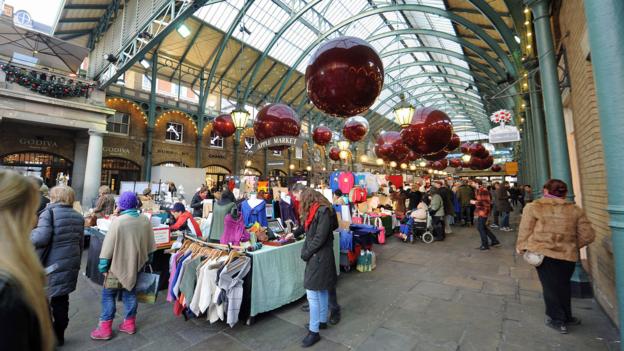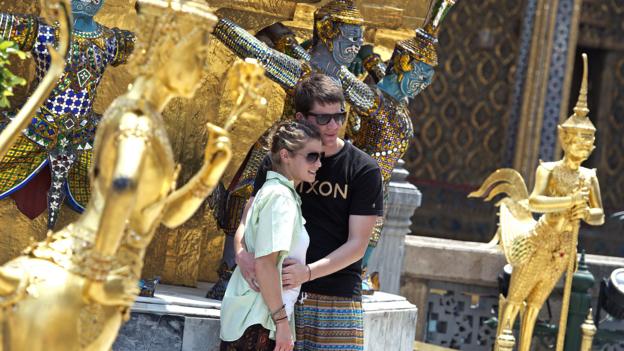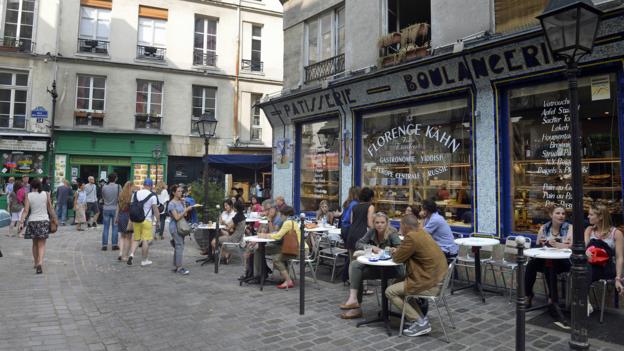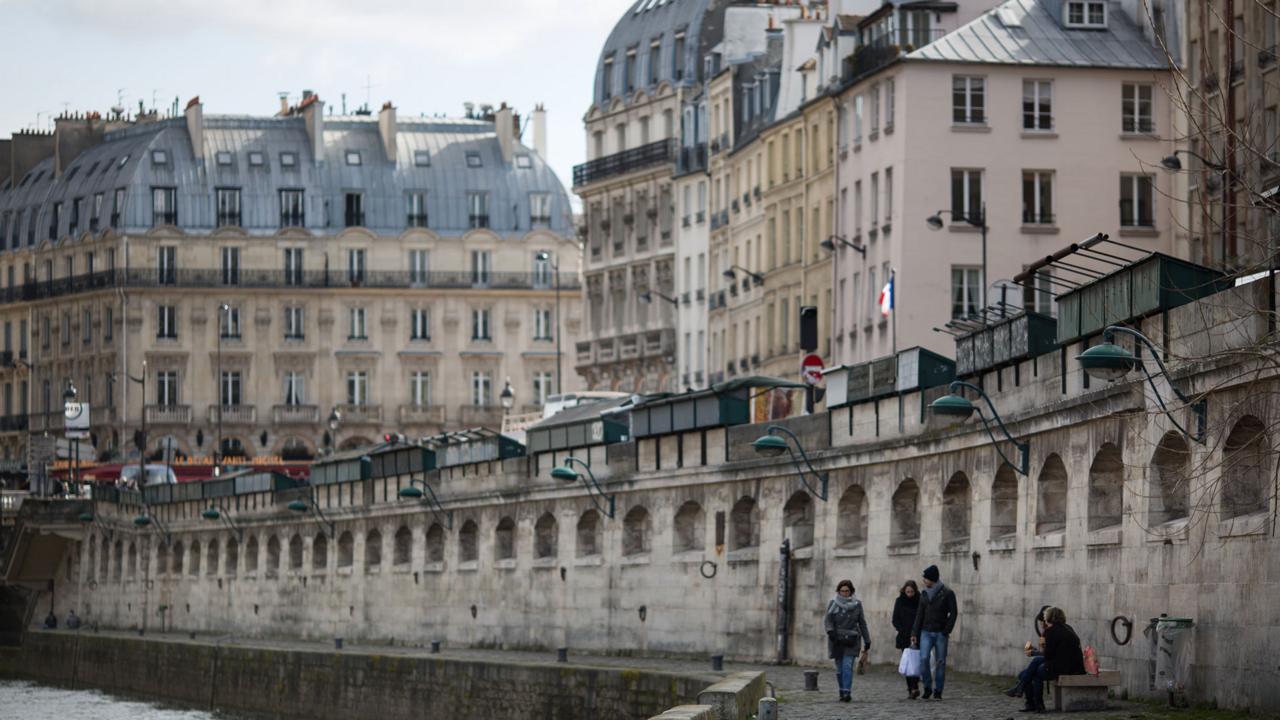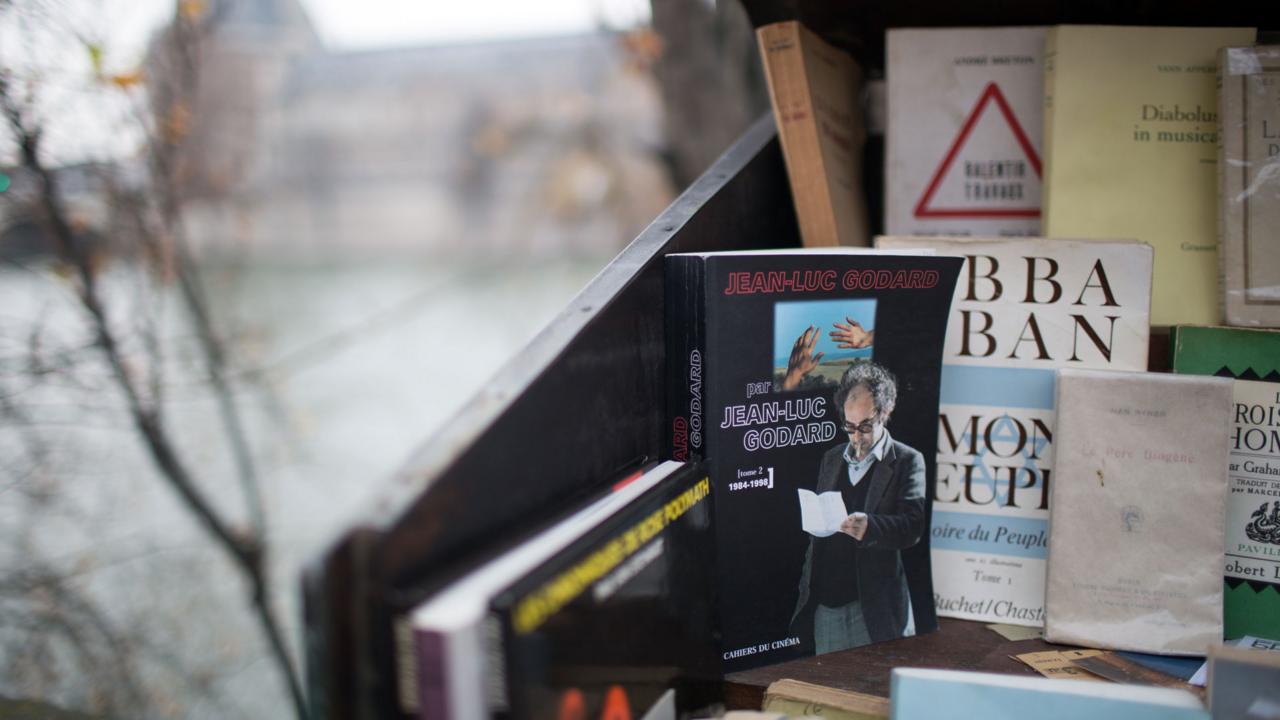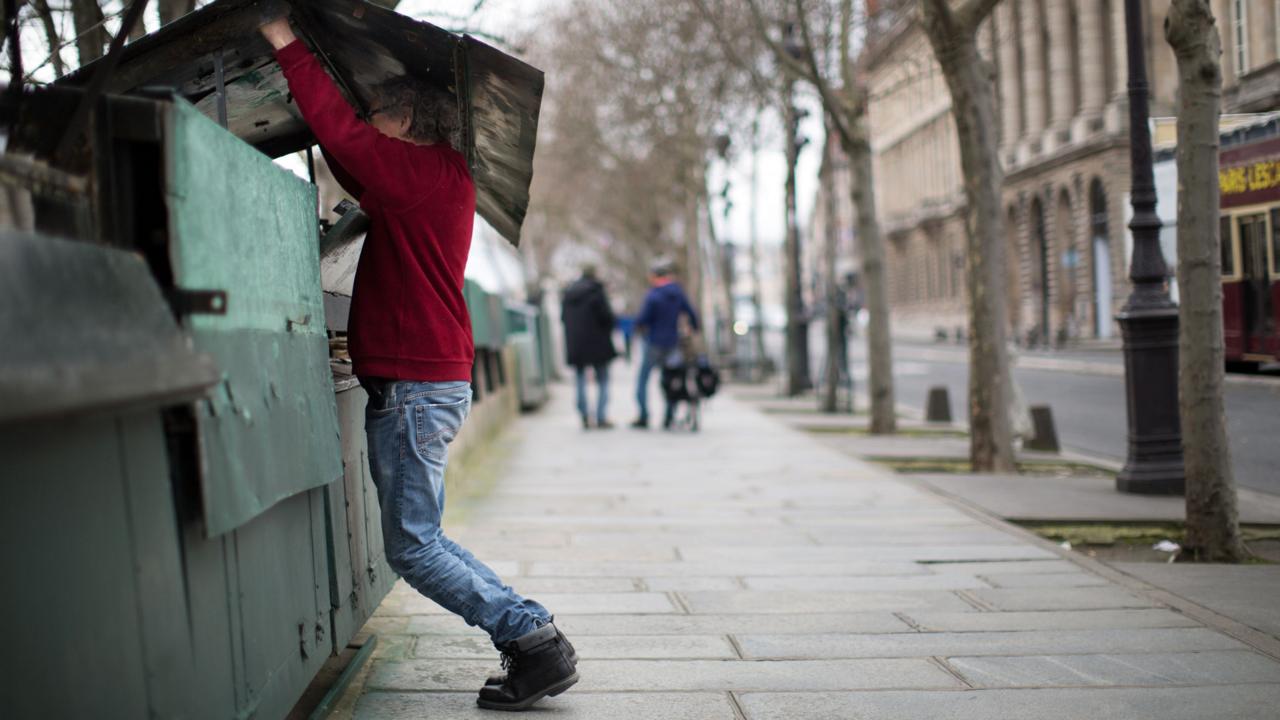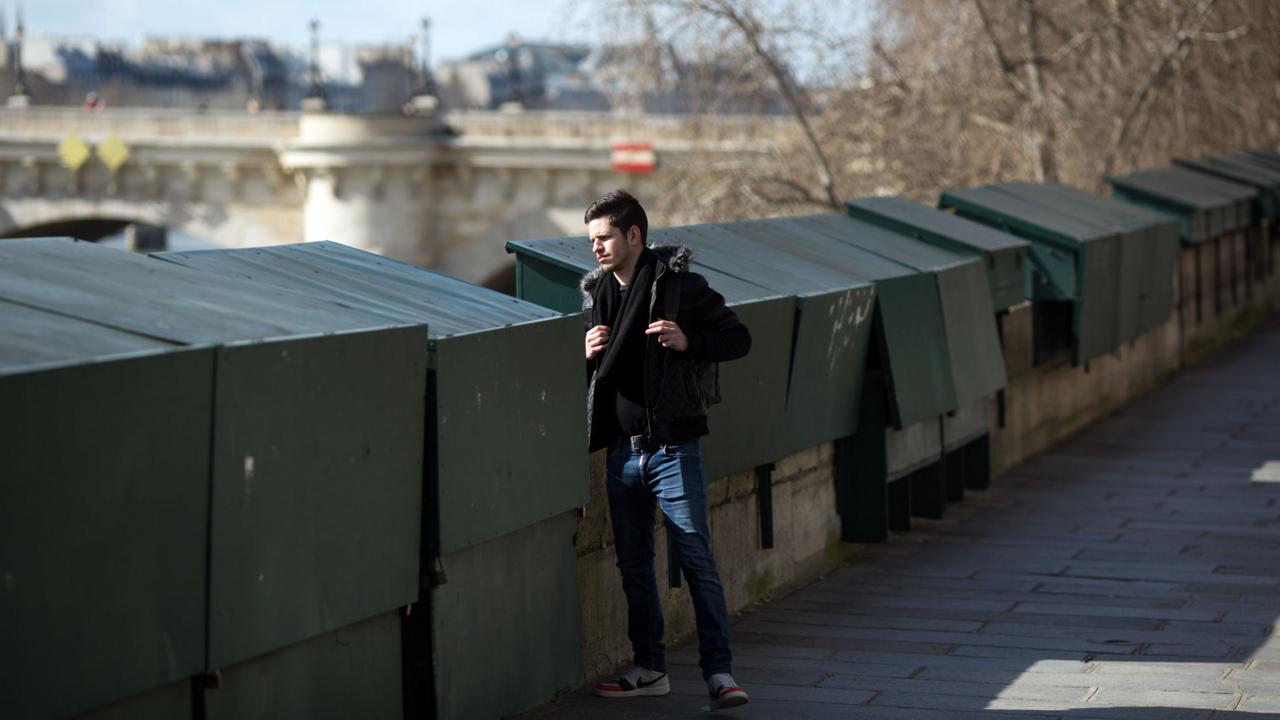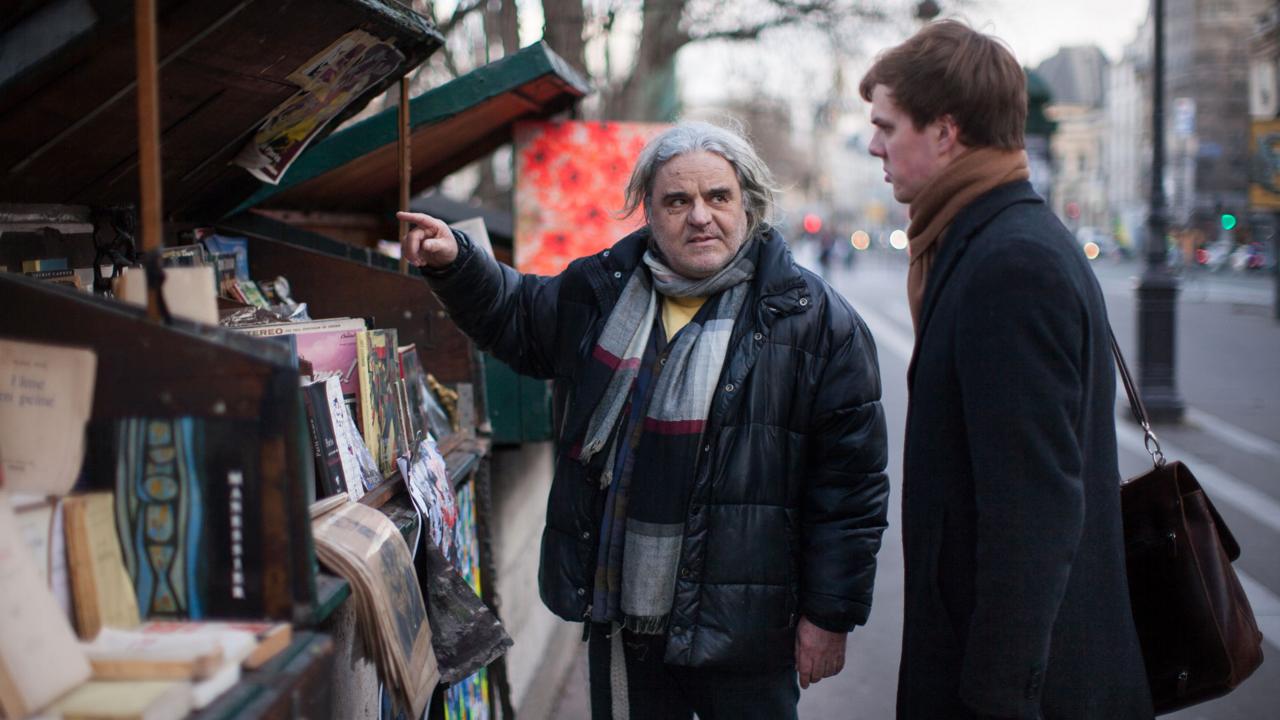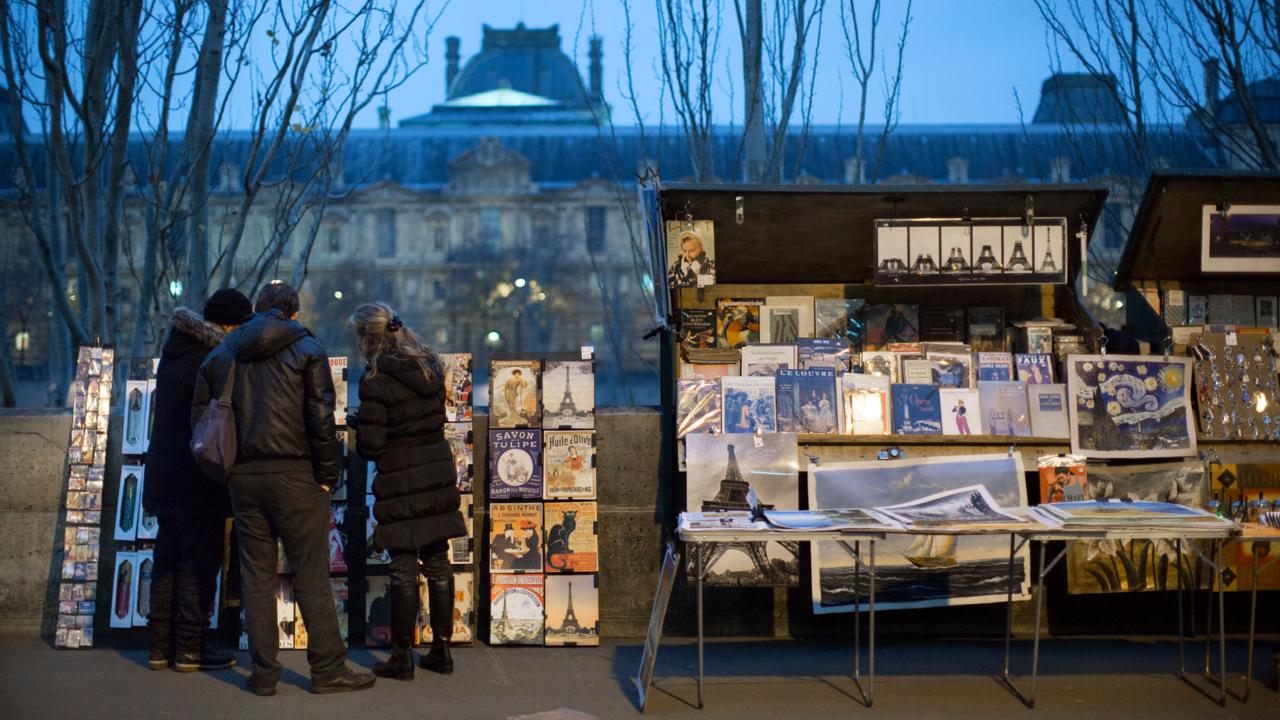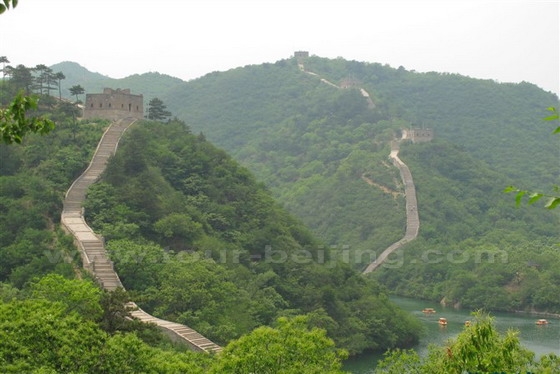Plan your
Great Wall Tour? Needless to say, you must visit the Great Wall of China on your first trip to Beijing China. So, when to visit, which sections of Great Wall to visit and how to visit?
The Great Wall of China was built mainly during the three dynasties – Qin Dynasty (221 B.C to 206 B.C), Han Dynasty (206 B.C.– 220 A.D ) and Ming Dynasty (1368 A.D – 1644 A.D). The most powerful Yuan Dynasty and the last Dynasty – Qing Dynasty did nothing about the building of the Wall since they were “barbarians” against whom the Wall of China was supposed to have been built.
Actually the history tells us the Wall played no role in preventing the “barbarians”. Never did the Wall stop any invations, large or small. But the Wall did do many things: it proclaimed the frontier, it employed the thousands, it prevented defections, it displayed the mighty of the emperor.
The Wall is not an “it” as you think. It is a “them”, walls in the plural, and they do not form a continuous line. They are in bits built in different dynasties. Those “bits” of the Wall snake across the northern China stretching from Shanhaiguan Pass in the east to Jiayuguan Pass in the west, totaling 21196 km long with the Great Wall built in Ming Dynasty as long as 8851 km.
Beijing is a good place to visit the “sections” of the Great Wall built in Ming Dynasty. Most of the “sections” of the Great Wall open to tourists here are tamed and reconstructed for the safety of travelers. But still there remain many wild ones (original and unrestored) – crumbling, overgrown and barred to walkers, attracting adventure hikers.
Here are some tips for planning ahead your visit to Great Wall of China around Beijing:
Tip # 01: The best time to hike the Great Wall of China
In Beijing, all the sections of the Wall are open to tourists all year round. The ideal months for the Great Wall hike fall on spring, early summer, autumn – later March, April, May, June, September, October and early November.
Great Wall Hike in Spring (March 15 to May 15)
Each year, March 15th is the official day of turning off the heating system in Beijing. This special date indicates the dry, harsh cold of Beijing’s winter is coming to an end though Beijingers will still have some chilly days in March.
A warmer spring usually starts early April and ends early May. So a warm springtime in Beijing lasts over one month. Kindly reminder: Wind and dust can be possible in the March. Generally speaking, Beijing is dry and windy in spring.
Spring is a delightful time to visit the Great Wall – mild climate, green trees and flowers. But if you hike the Great Wall, you still chilly and a bit cold in March, wearing jackets in the morning and evening due to the big temperature drop between day and night.
Visiting Great Wall in Summer (May 15 to September 15)
If you happen to visit the Wall in summer – later June, July and August, be prepared for heat stroke prevention – sunglasses, sun cream, sun block, hat, water. Summer is the rain season in Beijing and bring waterproofs in case.
You will expect a long queue, waiting to buy entrance ticket for the Great Wall mainly due to the large number of domestic tourists because of school vacations.
Hike Great Wall in Autumn (September 05 to November 15)
The foggy and cloudy days in Beijing’s oppressive summer are leaving us, coming with Beijing’s cooling autumn, with a blue sky, comfortable sunshine and the colorful leaves in and around Beijing.
Beijing autumn, specifically the two months from the mid-September to mid-November are the best season to visit Great Wall in a year. It’s always comfortably cool outside.
The best period autumn colors starts from October 15 throughout November 15 in Beijing with many trees change theirs colors with charming autumn hues. Snap pictures or just take in a feast for the eyes!
Fairly big difference in temperature between early morning and afternoon. Wear a thin jacket, or a warm coat in the morning, long-sleeve shirts or short T-shirts in the afternoon. So be mindful of the temperture difference in Autumn. Comfortabel sportshoes, rubber soled shoes for hiking. In afternoon, sometimes the autumn sunlight could be very strong, get ready for sunglasses, sun cream and sun hat.
Visit Great Wall in Winter (November 15 to March 15)
Winter Great Wall Hike is a bit challenging mainly due to the frozen weather in later December, January and early early February each year in Beijing. You are advised to dress warmly – winter hat with ear flap, ear warmers, gloves, scarf, warm jackets and ther winter accessories.
The Great Wall hike is impossible to hike only because the road access to sections is blocked due to the heavy snow. If you plan to do the hike in winter, we do suggest you check the weather report. Check out
How to dress for visiting Great Wall in winter.
Tip # 02: Avoid weekends or public holidays for the WallIt is better to hike the Wall during the weekdays instead of weekends. Strongly advise you not to visit the Wall during China public holidays ( Especially May 1-3, and October 1-7).
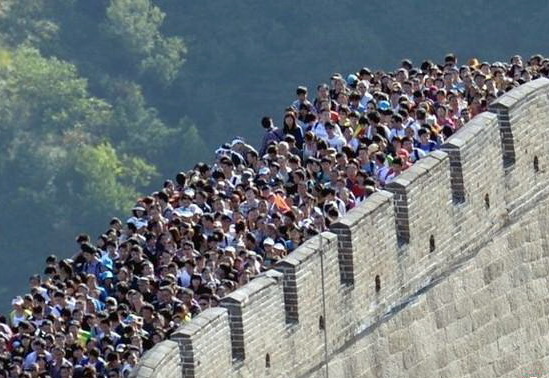
Great Wall Crowdedness
On these special days you will waste much of your valuable time on the way from your hotel to the Wall. On the Wall, you have to take group photos since there are a great number of people on the Wall.
Tip # 03: Select the right bit of the Wall (Great Wall Guide)There are 8 major sections of the Great Wall around Beijing. 7 of the 8 sections of the Wall are legally open to tourists home and abroad.”legally open” means these sections of the Wall are tamed, repaired and controlled by a local Great Wall administration bureau with facilities like parking lots, guardrails, restaurants, toilets and more.
Within its administration, the entrance fees are collected, a police station is set up and security guides are dotted along Wall.These “legal” sections of the Wall are Juyongguan, Badaling, Mutianyu, Jinshanling, Gubeikou, Huanghuacheng ( certain sections opened) and Simatai. Jiankou is not open to common tourists due to their wildness and treacherousness. Below are the tips for choosing the right bit of the Wall you most like:
1) If you don’t have much time, but you still want to have a glimpse of the Wall, especially on a
busy day, choose Juyongguan Great Wall.
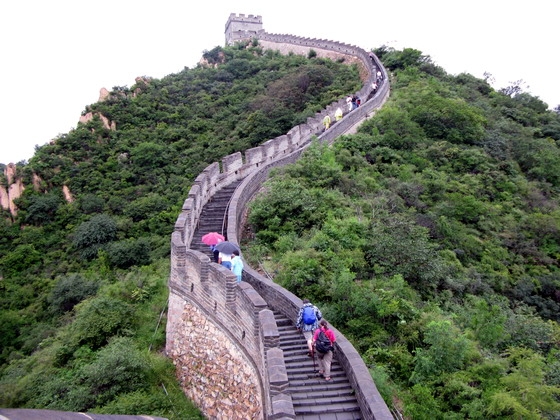
Juyongguan Grea tWall
2) If you want to see the most popular and gorgeous restored section of the Wall in Beijing, go toBadaling Great Wall.

Badaling Great Wall
3) If you want to visit the Wall with beautiful green scenery and environment ( travel with kids or seniors), visit Mutianyu Great Wall.

Mutianyu Great Wall
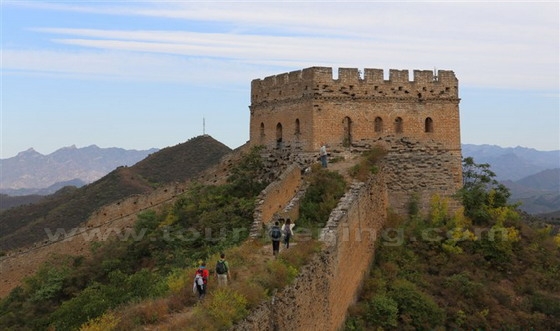
Jinshanling Great Wall
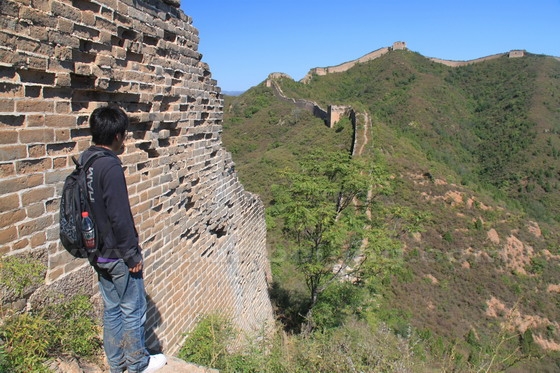
The wild and orignal section of Gubeikou Great Wall

Shixiaguan Great Wall

Jiankou Great Wall
Deshengmen (德胜门)- Badaling (八达岭)
Operating Hours:
06:00-12:00(Apr.1-Oct.31)
06:00-12:30 (Nov.1-Mar.31)
Return:
Badaling (八达岭)- Deshengmen (德胜门)
10:30-17:00(Apr.1-Oct.31)
11:00-16:30(Nov.1-Mar.31)
From: Deshengmen Bus Station
Note:
Bus 919 has two kinds of bus lines: 919 express (919快) and 919 slow (919慢) with their final destinations being Yanqing County. Bus 919 will stop at the Badaling Great Wall ( the drop-off stop is a bit far from the ticketing office). You are still advised to take 877, the special bus for Badaling Great Wall tourists. By the way, there is a bit chaos around Deshengmen Bus Station with some touts pushing you to take theirs vehicles or group. Just forget it and insist on taking the official Bus 877. Have a good day!
Badaling Great Wall Trains
Take the S Train from Beijing North Railway Station to Badaling Great Wall
Check:
how to visit Badaling Great Wall by train
Beijing North Railway Station → Badaling Great Wall Train Schedule
Train S201: 06:12 – 07:31
Train S203: 07:58 – 09:20
Train S205: 08:34 – 09: 47
Train S207: 09:02 – 10:15
Train S209: 10:57 – 12:13
Train S211: 12:42 – 14:01
Train S213: 13:14 – 14:25
Train S215: 13:35 – 14:50
Train S217: 15:24 – 16:43
Train S219: 17:11 – 18:30
Train S221: 17:41 – 18:51
Train S227: 21:28 – 22:44
Badaling Great Wall → Beijing North Ralway Station Train Timetable
Train S208: 08:23 – 09:47
Train S210: 10:51 – 12:12
Train S212: 11:19 – 12:40
Train S214: 11:50 – 13:12
Train S216: 13:02 – 14:23
Train S218: 15:19 – 16:43
Train S220: 15:52 – 17:25
Train S222: 16:21 – 17:39
Train S224: 17:33 – 18:54
Train S226: 19:34 – 21:11
Train S228: 20:06 – 21:43
Train S232: 21:33 – 23:03

Take the S Train from Beijing North Railway Station to Badaling
Tourist Bus No.867 to Mutianyu Great Wall
Directly running to Mutianyu Great Wall 慕田峪长城
The Tourist Bus 867 operates two daily departures: Start at 7:00am and 8:30am; return at 2:00pm and 4:00pm
Valid time: from March 15 – Nov 15 each year.
Important Notice: The final destination of the Bus 916 Express is actually Huairou Beidajie (怀柔北大街)in Huairou District, then you have to change for the local bus No.936 (Huairou – Dongtai 怀柔至洞台), continue to take the bus 936 (936路支线) for another 18.6km, pass 8 stops and get off at Mutianyu Great Wall finally.Bus 916 Express (916快)Fare: RMB 12
Bus 936 (936路支线) Fare: RMB 8
Bus Operation Time: 6:00-17:00 ( every 20 minutes )
Very Important Notice: Actually the Bus 980 Express stops at Miyun County ( 密云汽车站 ), and then you take a mini bus from the downtown Miyun to Jinshanling.
Bus Fare: RMB 15
Minibus Fare: about RMB 50 ( you have to share a mini-bus for Jinshanling Great Wall)
You can also charter a taxi for day trips to the Great Wall. The drive ranges from 1.5 hour to 2.5 hours from the city center according to the different sections of the Great Wall. Below are the approximate taxi fares to the different sections of the Great Wall with waiting for about 2-3 hours while touring the wall:Beijing Mutianyu Great Wall: 85km – RMB 600
Beijing Badaling Great Wall: 80km – RMB 500
Beijing Simatai Great Wall: 140km – RMB 700
Beijing Juyongguan Great Wall: 60km – RMB 400
Beijing Jinshanling Great Wall: 160km RMB 800
Beijing Gubeikou Great Wall: 150km – RMB 750
Beijing Jiankou Great Wall: 85km – RMB 650
Beijing Huanghuacheng Great Wall 85km – RMB 600
Tip # 05: Book a Great Wall Bus Tour
You can easily book Great Wall Bus Tour (daily group tours) through your hotel or local tour operators. Each morning, you will be picked you up from your midtown hotel, then you will go to visit the the Wall together with other tourists.Groups are kept to about 10 passengers in a comfortable modern 22-seat coach with professional Beijing chauffeurs and English speaking tour guide.
Tip # 06 Stay near the Wall
If you want to stay one night or more near the Wall, below are some of the inns and hotels for your consideration:Juyongguan Great Wall Hotel
Both Badaling Great Wall and Mutianyu Great Wall are wheelchair-friendly. On the Badaling Great Wall, a special flat lane is built for wheelchair users to get to the third watch tower of the Great Wall.Even two elevators are equipped for easy ascending the wall if you book the elevator service in advance.
On the Mutianyu Great Wall, wheelchair users may take a cable car up and then use the accessible lane leading to the platform below the 14th watch tower for a good view of Mutianyu Great Wall.
The accessible lane from the upper cable car station to the platform below the 14th watch tower on Mutianyu Great Wall.
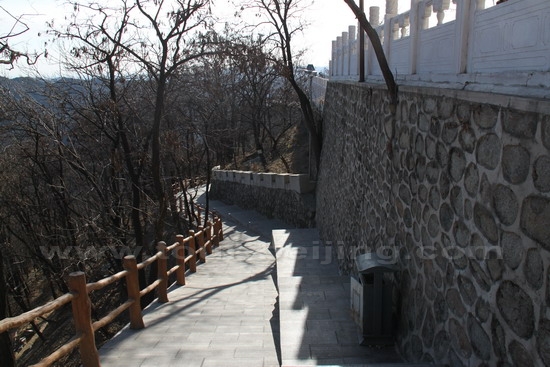
The accessible lane from the upper cable car station to the platform below the 14th watch tower
The accessible platform for wheelchair users below the 14th watch tower on Mutianyu Great Wall.
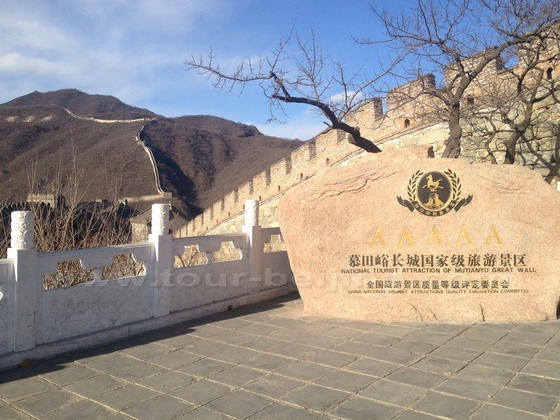
the platform below the 14th watch tower
Tip # 08 Tips for Experienced Travelersyou may choose half restored or wild sections of the Wall. But you have to be responsible for your own safety.
Travel Notes for wild great wall hiking:
1. Things to take: sports shoes or hiking boots, sticks, cap, sun-glasses, sunscreen, bottles of water, snacks, pocket knife, lip balm and first aid kit.
2. Using toilets at the entrance of the Wall. No toilets on the hiking route. Please always carry toilet paper by yourself.
3. Wearing pants and long-sleeves even in summer to hike through jungles and bushes.
4. You are responsible for your travel insurrance for your coverage of injury or accident.
5 Be a green and responsible hiker, taking nothing but photos and leaving nothing but footprint.

